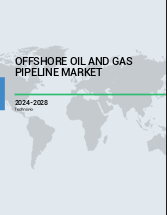

Enjoy complimentary customisation on priority with our Enterprise License!
1 Executive Summary
2 Market Landscape
3 Market Sizing
4 Historic Market Size
5 Five Forces Analysis
6 Market Segmentation by Sector
7 Market Segmentation by Product
8 Customer Landscape
9 Geographic Landscape
10 Drivers, Challenges, and Opportunity/Restraints
11 Competitive Landscape
12 Competitive Analysis
13 Appendix
Get lifetime access to our
Technavio Insights
Quick Report Overview:
Quick Report Overview:
Cookie Policy
The Site uses cookies to record users' preferences in relation to the functionality of accessibility. We, our Affiliates, and our Vendors may store and access cookies on a device, and process personal data including unique identifiers sent by a device, to personalise content, tailor, and report on advertising and to analyse our traffic. By clicking “I’m fine with this”, you are allowing the use of these cookies. Please refer to the help guide of your browser for further information on cookies, including how to disable them. Review our Privacy & Cookie Notice.